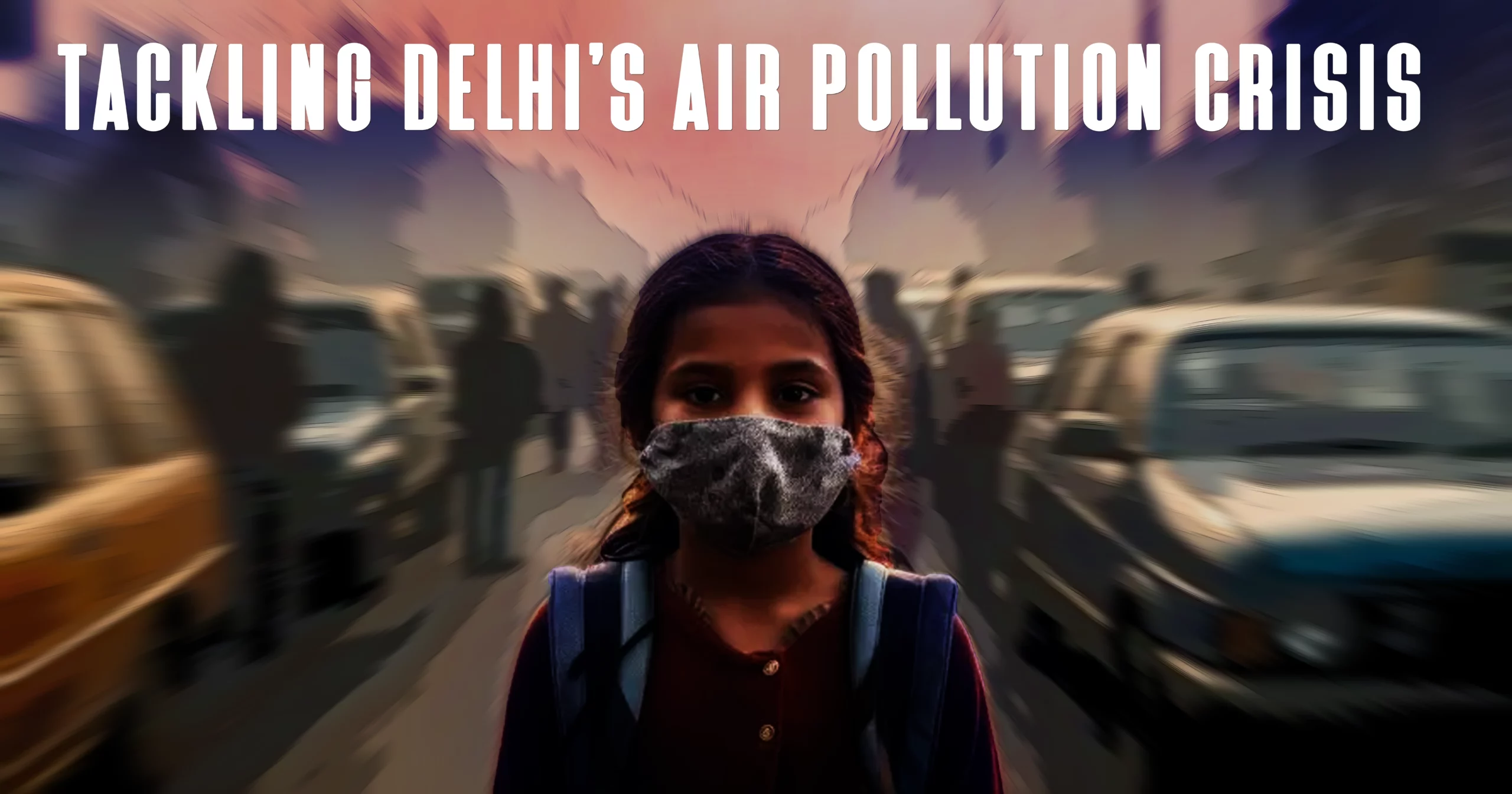
Context (IE):
Delhi’s Air Quality Index (AQI) frequently surpasses the hazardous level of 400, particularly in November. This persistent pollution crisis has severely impacted public health, reducing the average life expectancy by nearly 11.9 years.
Major Sources of Pollution
- Stubble Burning:
Contributes up to 35% of PM 2.5 emissions during the winter, primarily from neighboring states like Punjab and Haryana. - Transport Sector:
Vehicular emissions account for approximately 19% of Delhi’s air pollution. - Industrial and Construction Activities:
Industrial emissions add 4.6%, while construction activities contribute around 2.4% to the particulate matter. - Residential and Road Dust:
These sources collectively contribute 5.3% to the PM 2.5 pollution levels. - Pollution from Neighboring Areas:
Approximately 30-35% of Delhi’s air pollution originates from surrounding regions such as Gurugram, Faridabad, and Ghaziabad.
Key Issues
- Policy Gaps:
Absence of effective, long-term solutions to manage both crop residue burning and urban pollution. - Slow EV Adoption:
Limited infrastructure and the high cost of electric vehicles have slowed the transition to cleaner transport. - Inadequate Technological Interventions:
Minimal deployment of advanced pollution control technologies, such as smog towers. - Market Risks for Farmers:
Low profitability of alternative crops compared to paddy discourages farmers from diversifying. - Political Inaction:
A lack of coordinated efforts between the central and state governments has hindered effective pollution management.
Proposed Measures to Combat Pollution
- Incentivizing Crop Diversification
- Enhanced Financial Support: Increase incentives for farmers adopting alternative crops like pulses, oilseeds, and millets to ₹35,000 per hectare for five years.
- Groundwater Conservation: Promote less water-intensive crops to address groundwater depletion in Punjab and Haryana.
- Procurement Assurance: Guarantee Minimum Support Price (MSP) for diversified crops to mitigate market risks and reduce dependence on imports.
- Strengthening the Electric Vehicle (EV) Policy
- Infrastructure Expansion: Establish 30,000 EV charging stations across Delhi, compared to the current 2,450.
- Mandatory EV Charging Provisions: Integrate charging infrastructure in residential complexes, offices, and commercial spaces like malls.
- Accelerating EV Adoption: Fast-track Delhi’s EV 2.0 policy to achieve 25% EV registrations by March 2025.
- Innovative Technological Solutions
- Smog Towers: Deploy vacuum cleaning towers in high-traffic and pollution-prone zones.
- Real-time Monitoring: Implement advanced technologies for continuous tracking and mitigation of PM 2.5 levels.
- Green Infrastructure: Invest in urban green spaces and air-purifying plants to improve air quality naturally.
Benefits of Proposed Actions
- Health Improvement:
Reduction in respiratory and cardiovascular diseases, leading to improved public health. - Environmental Sustainability:
Conservation of groundwater resources and a decrease in greenhouse gas emissions. - Economic Gains:
Reduced expenditure on subsidies and a decline in the import of pulses and edible oils. - Global Leadership:
Positioning Delhi as a model city for effective air quality management, setting an example for other urban centers worldwide.
Way Forward
- Collaborative Governance:
Strengthen cooperation between central and state governments to ensure unified action on pollution control. - Farmer Engagement:
Provide sustained financial incentives and market stability to encourage farmers to diversify crops. - Rapid EV Deployment:
Simplify policies and offer subsidies to accelerate the adoption of electric vehicles. - Public Awareness:
Launch extensive awareness campaigns to educate citizens on responsible behavior and community participation in reducing pollution. - Continuous Innovation:
Promote research and development in pollution control technologies to implement cutting-edge solutions.




